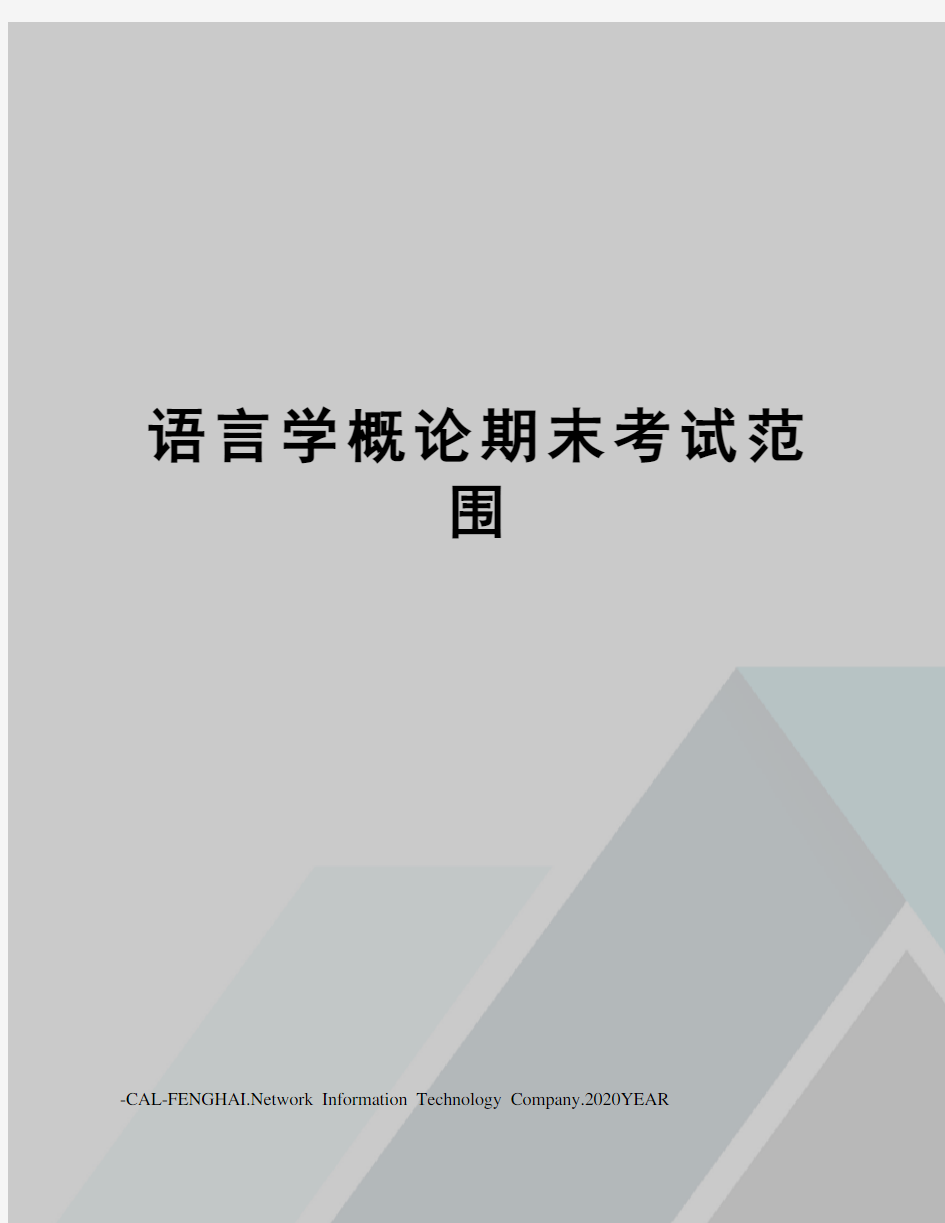
语言学概论期末考试范围
- 格式:doc
- 大小:89.50 KB
- 文档页数:5


语言学概论期末考试范
围
work Information Technology Company.2020YEAR
语言学概论期末复习2014.1
1. diachronic linguistics
Linguistics that studies language over a period of time, also known as historical linguistics, e.g.the study of the Chinese language since the end of the Qing dynasty up to the present.
2. arbitrariness
Language is arbitrary for the forms of linguistic signs bear no natural resemblance to their meaning. The link between the linguistic signs and their meanings is a matter of convention, and conventions differ radically across languages.
3. langue
According to Saussure, langue refers to the abstract linguistic systems shared by all the members of a speech community. It can be thought of as the generalized rules of the language that members of a speech community seem to abide by.
4. competence
Chomsk y defines competence as the abstract ideal user’s knowledge of the rules of his language. According to him, anyone who knows a language has internalized a set of rules about the sequences permitted in his language. This internalized set of rules is termed as a person’s competence.
5. morpheme
The most basic element of meaning is traditionally called morpheme. The “morpheme’ is the smallest unit in terms of relationship between expression and content, a unit which can not be divided without destroying or drastically altering the meaning.
6. Morphology
Morphology studies morphemes and their different forms and the way they combine in word formation. So it refers to the study of the internal structure of words and the rules by which words are formed
7. Semantic triangle
According to Ogden and Richard’s semantic triangle, there is no direct link between language and the world, or between the symbol ( the linguistic elements, the word, the sentence) and referent ( the object in the world of experience). The link is via thought or reference, the concepts of our minds.
8. Lingua franca
Lingua franca is the general term for a language that serves as a means of communication between different groups of speakers.
9. componential analysis
Componential analysis is a way to analyze lexical meaning, and it defines the meaning of a lexical element in terms of semantic components.
10. Cooperative Principle
Cooperative Principle (CP) was proposed by Paul Grice, under which there are four maxims: the maxim of quantity, the maxim of quality, the maxim of relation and the maxim of manner. It means in communication, both parties involved will normally seek to cooperate with each other to establish agreed meaning.
11. acquisition